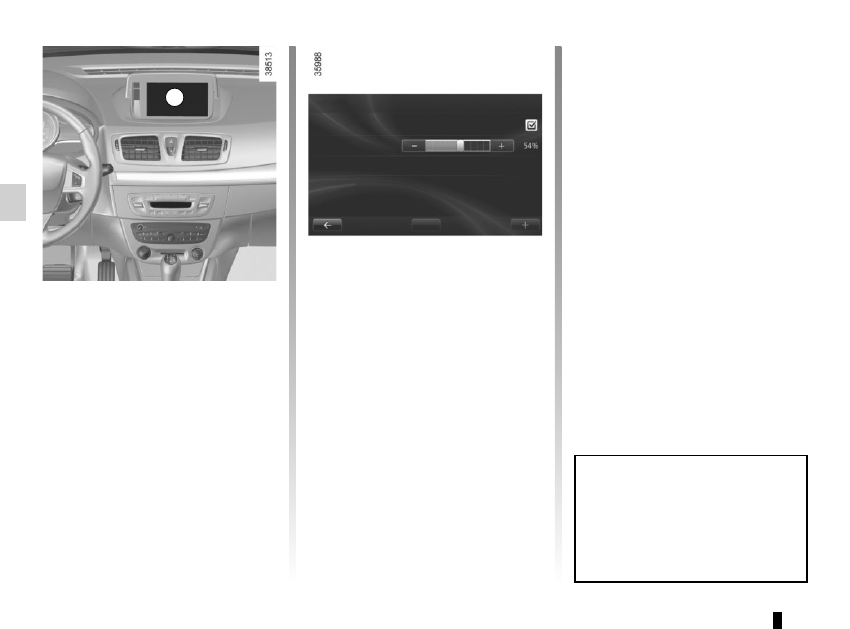Renault Megane Sport Tourer (2016 year). Manual - part 9

2.40
When the vehicle is being driven at
a speed below approximately 6 mph
(10 km/h), certain noises (motorcy-
cle, lorry, pneumatic drill, etc.) may
trigger the beeping sound.
PARKING DISTANCE CONTROL
(4/4)
Adjusting the parking
distance control volume
From the multimedia display
Certain settings can be adjusted from
the multimedia display A. Please see
the equipment instructions for further
information.
Select “menu”, “Settings”, “Park Assist”,
then adjust the parking distance con-
trol volume by pressing + or -.
Deactivating the system
From the multimedia display
You can deactivate the parking distance
control from the multimedia display.
Select “menu”, “Settings”, “Park Assist”
then “Rear parking sensor” or “Front
parking sensor”. Activate or deactivate
the parking distance control and con-
firm your choice by selecting “Done”.
Done
Park Assist
Rear parking sensor
Volume
Image settings
Rear camera view settings
Operating faults
When the system detects an operating
fault, a beep sounds for approximately
3 seconds each time reverse gear is se-
lected and is accompanied by the mes-
sage “Check parking sensor” shown on
the instrument panel. Please consult an
authorised dealer.
Special features
Ensure that the ultrasonic sensors are
not obscured (by dirt, mud, snow, etc.).
A